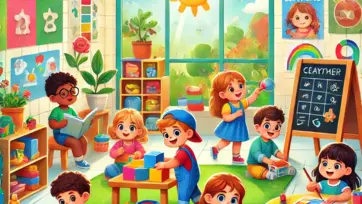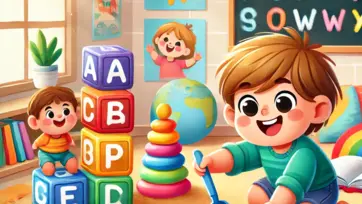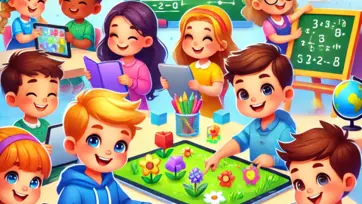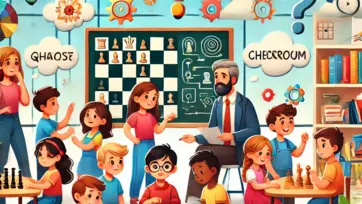Helping kids develop good study habits is essential for their academic success. Strong study skills not only improve grades but also build a foundation for lifelong learning. Many children struggle with concentration, time management, and motivation when it comes to studying. As a parent or teacher, you can support them by creating the right environment, encouraging consistency, and teaching effective learning strategies.
In this guide, we’ll explore practical tips to help kids develop good study habits and achieve better grades.
1. Create a Distraction-Free Study Space
The first step in building effective study habits is ensuring that children have a dedicated place for studying. A quiet and organized study environment helps kids concentrate better.
How to Set Up the Perfect Study Space:
- Choose a quiet area – Avoid distractions from TV, noisy siblings, or mobile devices.
- Ensure proper lighting – A well-lit study area prevents eye strain and fatigue.
- Keep it clutter-free – A clean desk helps with focus and organization.
- Provide necessary supplies – Have pens, notebooks, a computer (if needed), and reference materials handy.
A well-structured study space makes studying more enjoyable and productive.
2. Set a Study Schedule and Stick to It
Consistency is key to developing strong study habits. Kids should have a daily study routine that fits their natural rhythm.
Tips for Creating an Effective Study Schedule:
- Choose the best time – Some kids focus better in the morning, while others prefer evening study sessions.
- Use a planner or calendar – Mark important dates for tests and assignments.
- Break study sessions into chunks – The Pomodoro technique (25 minutes of study, 5-minute breaks) keeps kids focused.
- Encourage daily review – Instead of cramming before exams, children should review lessons daily.
A structured routine ensures kids are well-prepared and avoid last-minute stress.
3. Teach Time Management Skills
Many kids struggle with time management, leading to rushed assignments or incomplete work. Teaching them to prioritize tasks can help them stay on top of their studies.
How to Improve Time Management in Kids:
- Make a to-do list – Writing down tasks helps kids track progress.
- Use timers or alarms – Set a time limit for each task to avoid procrastination.
- Teach prioritization – Encourage kids to start with challenging subjects first when they have more energy.
- Avoid multitasking – Focusing on one subject at a time increases retention and understanding.
Helping children manage their time wisely boosts their confidence and reduces anxiety.
4. Encourage Active Learning Strategies
Passive reading or memorization is not enough to develop strong study skills. Kids should engage with the material in different ways to retain information better.
Effective Study Methods:
- Summarizing information – Writing down key points helps with memory.
- Using flashcards – Great for vocabulary, math formulas, and quick revision.
- Teaching others – If a child can explain a concept to someone else, they truly understand it.
- Practicing past papers – Helps with exam preparation and identifying weak areas.
Active learning techniques make studying more engaging and efficient.
5. Promote a Positive Attitude Towards Learning
Children perform better when they feel confident about their abilities. Encouraging a growth mindset can help them overcome challenges.
Ways to Build a Positive Learning Mindset:
- Praise effort, not just results – Celebrate hard work rather than focusing only on grades.
- Encourage problem-solving – Teach kids that mistakes are part of the learning process.
- Relate studies to real life – Show how school subjects apply to everyday life.
- Keep learning fun – Use educational games, quizzes, and interactive lessons.
A child who enjoys learning will naturally develop good study habits.
6. Reduce Stress and Avoid Overloading
Too much studying without breaks can lead to burnout. Kids need time to relax and recharge.
Tips for Keeping a Healthy Balance:
- Encourage breaks – A 5-10 minute break after 30 minutes of study improves focus.
- Include physical activity – Exercise helps boost brain function.
- Ensure proper sleep – Kids need 8-10 hours of sleep for optimal learning.
- Avoid last-minute cramming – Encourage steady, gradual learning.
A balanced approach prevents stress and keeps kids motivated.
7. Use Technology Wisely
Technology can be a great tool for learning if used correctly. However, it can also be a distraction.
How to Use Technology for Studying:
- Educational apps – Platforms like Khan Academy, Duolingo, and Quizlet make learning interactive.
- Online research – Teach kids to find credible sources for assignments.
- Digital planners – Apps like Google Calendar help manage study schedules.
- Video lessons – Watching educational videos reinforces understanding.
Tip: Set screen time limits to ensure kids use technology for learning, not just entertainment.
8. Encourage Reading and Writing Skills
Strong reading and writing skills improve comprehension in all subjects.
Ways to Boost Reading & Writing:
- Encourage daily reading – Books, magazines, and newspapers expand vocabulary.
- Teach note-taking skills – Writing summaries helps kids process information.
- Start a journal – Writing thoughts and reflections improves creativity.
- Practice comprehension exercises – Asking questions about what they read enhances understanding.
Good reading habits lead to better learning outcomes in all subjects.
9. Be a Role Model and Offer Support
Children learn by example. If they see parents or teachers valuing education, they are more likely to develop the same attitude.
How to Support Kids in Their Studies:
- Show interest in their progress – Ask about their lessons and help with homework.
- Create a study-friendly home environment – Reduce distractions and encourage learning.
- Set achievable goals – Celebrate small successes to keep kids motivated.
- Stay patient and encouraging – Avoid scolding for mistakes; instead, guide them.
A supportive environment makes a significant difference in a child’s academic success.
Final Thoughts
Developing good study habits is a gradual process that requires guidance, consistency, and encouragement. By creating a structured study environment, teaching time management skills, and promoting active learning, you can help children achieve better grades and a lifelong love for learning.
Remember, the goal is not just academic success but also building confidence and independence in kids. With the right support, every child can develop strong study habits and reach their full potential.
Did You Find These Tips Helpful?
If so, share them with other parents and educators to help more children succeed in their studies!








